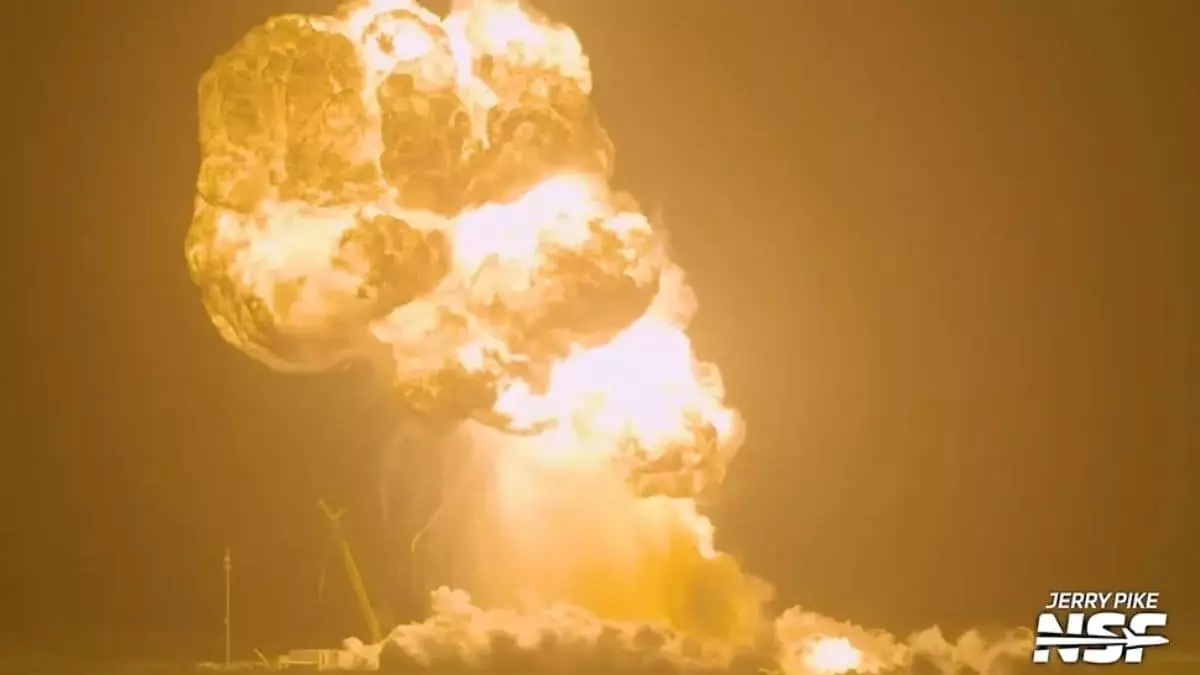Late Wednesday night, a seismic disturbance rattled the SpaceX Starbase facility in Texas as a Starship rocket met a dramatic end during a routine static fire test. The explosion, occurring around 11:00 p.m. local time, painted the night sky with a massive fireball that left the public and space enthusiasts alike in shock. Fortunately, there were no reported casualties, and SpaceX confirmed that all personnel were safe. However, the implications of this incident extend far beyond the immediate safety of its employees; they raise urgent questions regarding the culture of risk-taking looming over this ambitious company.
Understanding the Failure
Initial reports point to a failure of a Composite Overwrapped Pressure Vessel (COPV) within the rocket’s nosecone as the likely culprit. Given the complexities involved in space travel, such accidents can occur, yet what worries me is the apparent cavalier attitude towards failure showcased by SpaceX. Elon Musk’s dismissive characterization of the explosion as merely a “scratch” not only downplays the significant implications of such malfunctions but also raises alarm bells about the priorities within the company. While the exuberance of innovation is commendable, this mindset seems to underestimate the potential consequences an explosion could wield against public trust and regulatory approval.
Persistent Challenges in Space Exploration
This explosion isn’t an isolated incident; it’s the latest in a troubling series of failures that have plagued the Starship program. A previous test flight saw a prototype explode over the Indian Ocean while the booster intended for a controlled splashdown failed spectacularly. Historically, repeated setbacks have raised eyebrows among safety advocates and environmentalists alike, especially as SpaceX seeks not just to push boundaries but to do so at an unprecedented rate.
Even as SpaceX continues to receive glowing praises from NASA, which utilizes its Dragon spacecraft to deliver astronauts to orbit, the tension between rapid advancement and safety protocols cannot be ignored. The Federal Aviation Administration’s recent approval allowing for up to 25 launches a year exacerbates this issue; the decision seemingly favored corporate ambition over comprehensive environmental and safety assessments.
Innovation or Irresponsibility? A Critical Examination
As we stand on the cusp of what could be a transformative era in space travel—where the dream of colonizing Mars underpins the ambitions of many—one must question: are we genuinely prepared for the risks involved? Musk’s mantra of “test aggressively and iterate quickly” serves as a double-edged sword. It’s easy to romanticize the thrill of failure as a stepping stone to success; however, when lives and ecosystems are at stake, this recklessness teeters on the edge of irresponsibility.
In this race to the stars, we must uphold rigorous standards that protect both team and environment. Groundbreaking endeavors should not come at the expense of safety. As we cheer for missions that may one day take humanity farther than ever before, it is imperative that we do so with caution, ensuring each explosive setback lays the groundwork for safer innovations to come.



Leave a Reply